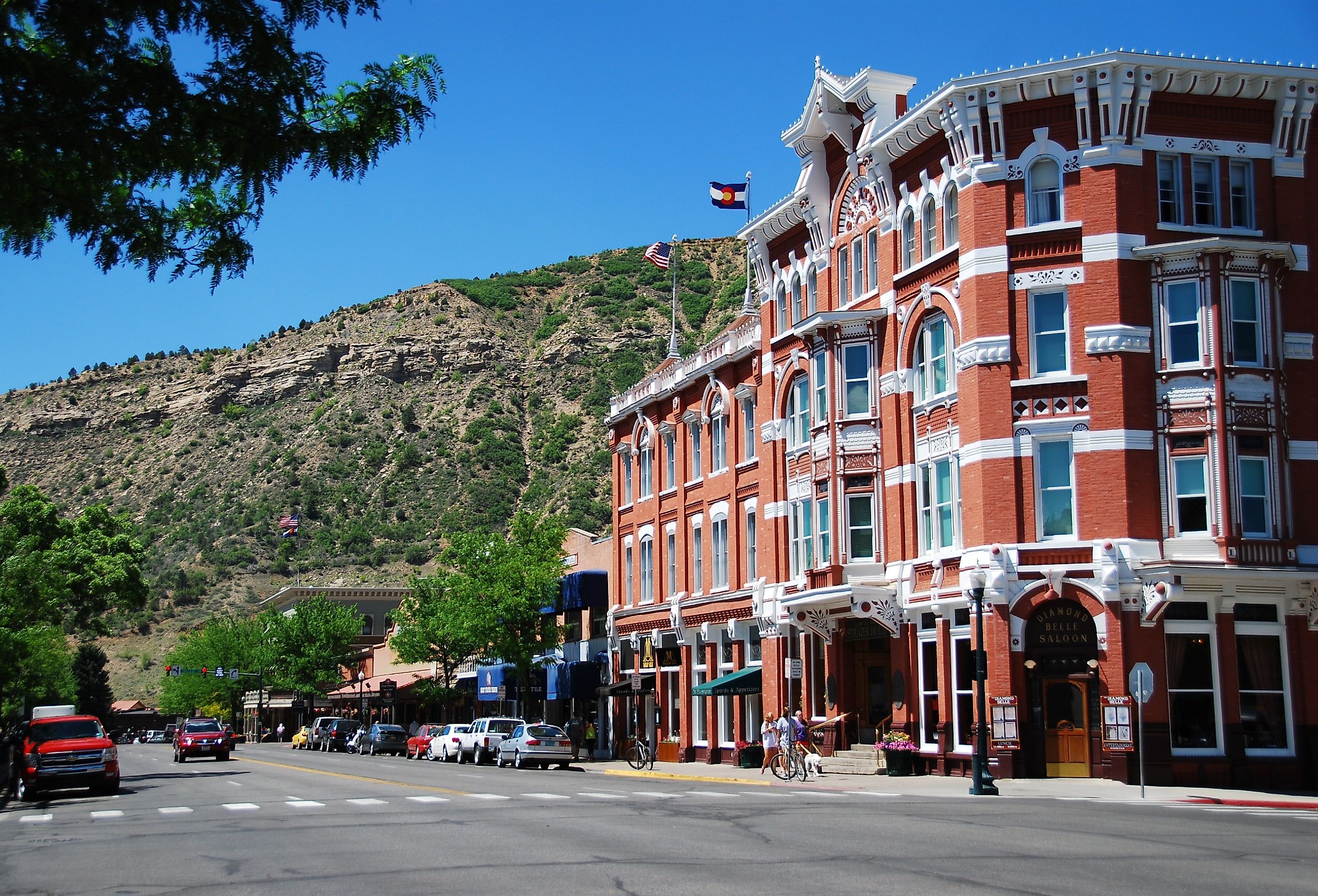
10 Most Historic Small Towns to Visit in the Colorado Plateau
The Colorado Plateau is a 130,000 square mile in the Southwestern United States famous for its captivating landscapes characterized by magnificent canyons, mesas, red sandstones, treacherous cliffs, rivers, and mountains. But beyond its stunning landscape, this area is also rich in history, as humans have lived and thrived here for thousands of years. Today, several small towns across the vast desert region preserve rich histories, and each has unique stories to tell. From Taos to Moab, these towns in the Colorado Plateau are incredibly historic and worth visiting for an immersion into the early days of America.
Gallup, New Mexico
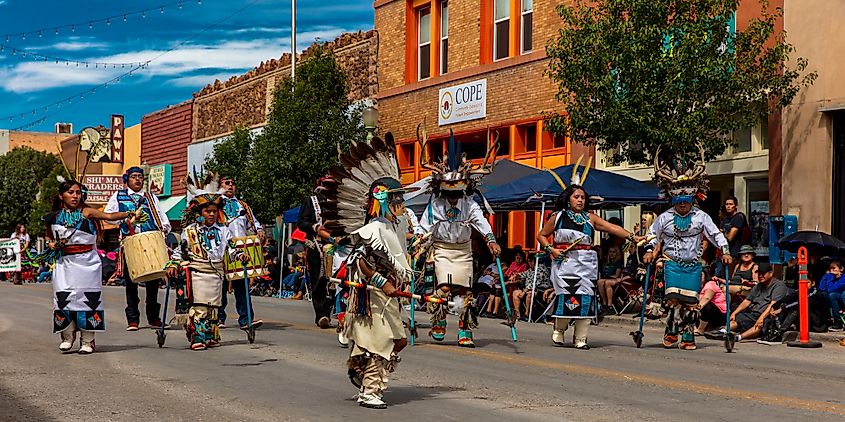
Gallup is a Native-American-dominated town founded in 1881 to serve as the headquarters of the Atlantic and Pacific Railroad. Tourists intrigued by Native American tales will love it here, as the town is known as “the Heart of Indian Country” and has substantial members of the Zuni, Navajo, Hopi, and other tribes. Once here, visit the Gallup Cultural Center to witness programs, art exhibitions, and performances highlighting Native American cultures.
Learn about ancient Puebloans and other Native American tribes that once lived in the area via interactive exhibits at the Red Rock Park Museum. Head to Angela’s Café afterward to dine when hungry, and then proceed to Art 123 to browse through incredible works from the town's creative talents.
Cortez, Colorado
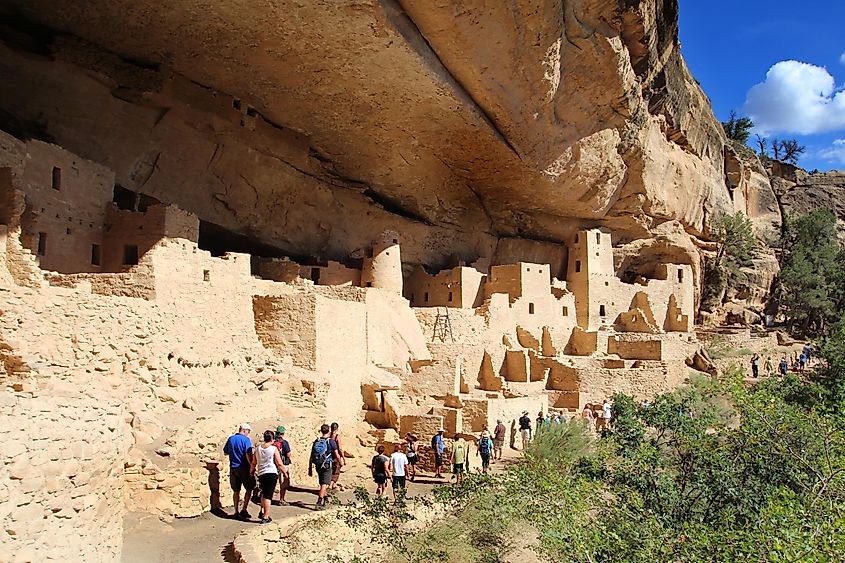
Cortez was founded in 1886 to serve as accommodation for workers on the irrigation ditches and tunnels that would reroute water from Dolores River to Montezuma Valley. It was named after a Spanish colonialist, Hernan Cortez, and sits near the four corners, where the borders of Colorado, Utah, Arizona, and New Mexico meet. A visit to this town is an opportunity to learn more about the rich history of the Pueblo culture, and the Cortez Cultural Center is a great place to start.
Notably, Cortez is one of the closest towns to the Mesa Verde National Park, a UNESCO World Heritage Site known for its series of cliff dwellings built by the Ancestral Pueblo people. Also in town, the Montezuma Heritage Museum houses temporary exhibits on the town’s past and that of the county, including film shows. Before leaving, shop for antiques and handcrafted items at Antique Corral.
Holbrook, Arizona

Holbrook is an ancient town in the iconic Navajo nation that was founded between 1881 and 1882 when a railroad track and station were built in the area. Today, Holbrook has several historic attractions for visitors, beginning with the Navajo County Courthouse, where the area’s rich history is preserved and interpreted. Other historic sites in town include Sidney Sapp House (built in 1911) and the iconic Wigwam Motel (built in the 1930s).
In addition to its historic allure, Holbrook houses other must-see locales like the Roxy Theater (the only operating cinema on Route 66) and Hidden Cove Petroglyph Park (featuring ancient petroglyphs and birds.) Petrified National Forest is also near the town and invites visitors to see many deposits of petrified wood and fossils.
Bluff, Utah
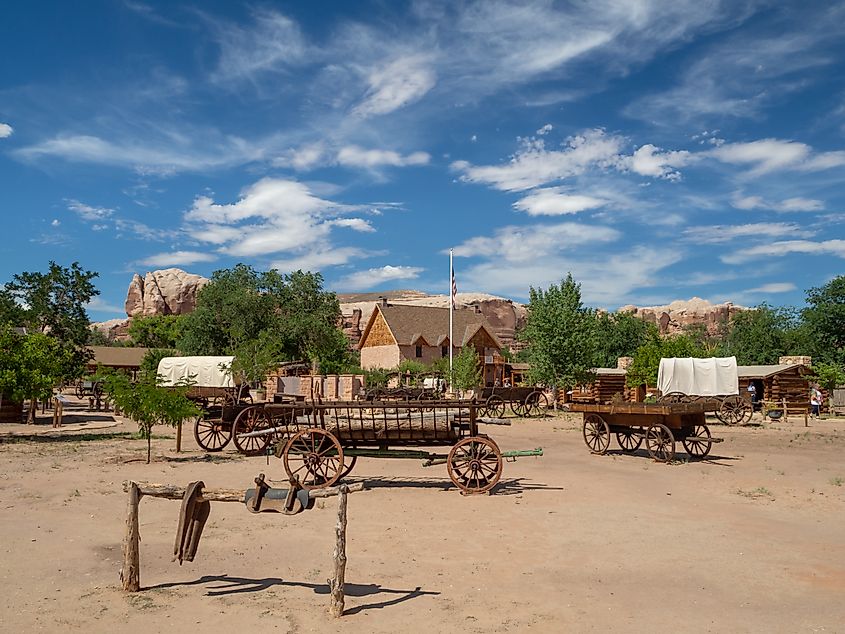
Bluff is a small town of just below 400 people, founded in 1880 by Mormons on an expedition to establish a farming community. They discovered this small town and named it after the many bluffs around it. Hundreds of years later, Bluff is a charming community that invites visitors to learn about its origins at Bluff Fort Historic Site. Twin Rocks Trading Post is another historic attraction in town beneath the iconic Navajo Twin Rocks, and doubles as an art store, offering handcrafted Native American art.
For more history, visit the Bluff Historic District to see historic properties and sites like the Bluff Pioneer Cemetery, Joseph Frederick Adams House (built 1895), and the Jens Nielson House (built in 1890). For exotic dining while in town, visit Canyon Smokehouse on the main street and, afterward, have fun at the San Juan River rafting, floating, and paddling.
Durango, Colorado
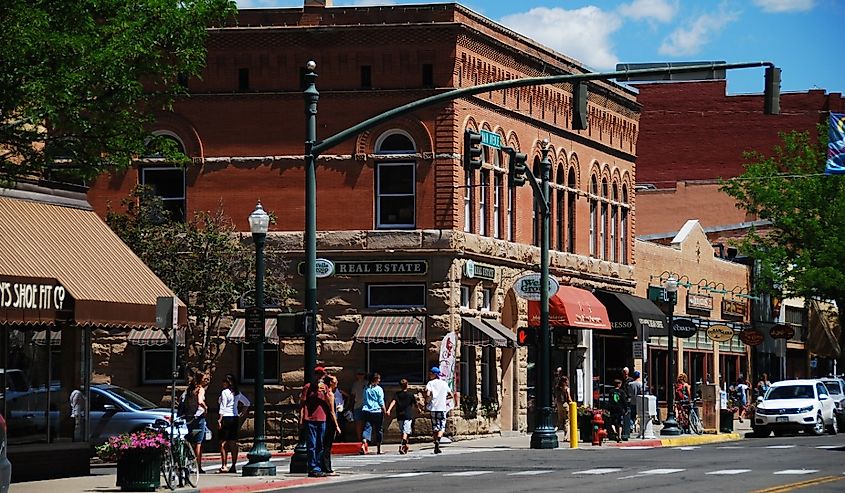
Durango’s history dates thousands of years back when the Ancestral Puebloans lived in the area. Hundreds of years later, in 1860, with the discovery of gold in the area, hundreds traveled down in search of riches. However, it was in 1880, with the arrival of railroads, that Durango became an established town. Today, visitors can explore its historic attractions, such as the Strater and General Palmer Hotels, which feature artifacts and antiques alongside Wild West and Victorian-themed rooms.
Proceed to the Animas Museum to learn about the town’s past through exhibits and programs. As a town rich in railroad history, visitors must visit the Durango-Silverton Narrow Gauge Rail Museum to learn about the railroad and its role in its creation. Afterward, head to the Animas River to paddle, float, fish, and raft or recline at the Durango Arts Center to enjoy performances, plays, and art exhibits.
Telluride, Colorado
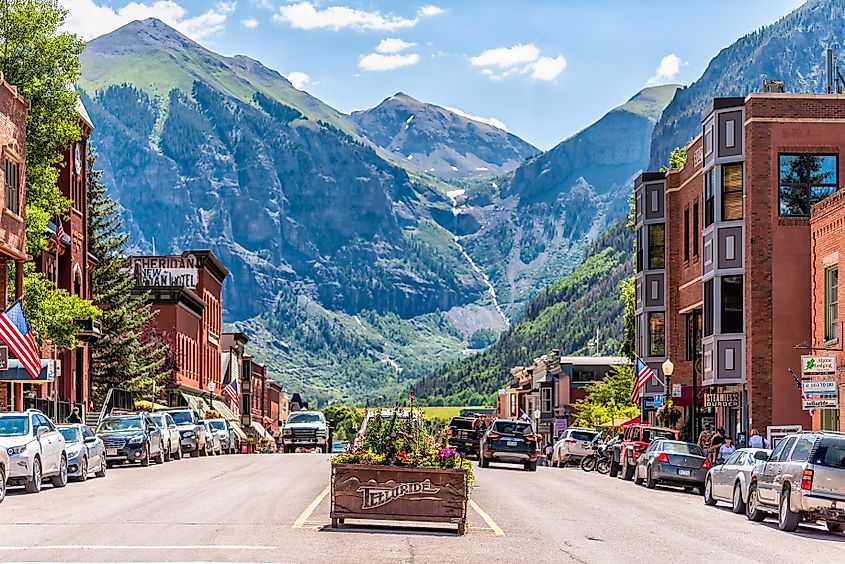
Telluride is one of the numerous towns in the US founded due to the quest for fortune. It all started with the arrival of Spanish explorers in the late 1700s who displaced the Native American tribe and eventually discovered treasures in Colorado’s Rocky Mountains. In 1878, the town of Telluride was founded after gold was discovered in the area, and it quickly grew as a mining hub as people rushed in with dreams of wealth. Today, the town is home to a historic district full of structures reflecting Victorian and Wild West architecture.
The town also hosts the Telluride Historical Museum, which houses an extensive collection of artifacts and photographs of the area's geological and mining history. Other historic attractions serving as testaments to the town’s rich history include - the Pekkarine Building, The Town Hall, the New Sheridan Hotel, and the Sheridan Opera House. For art lovers, the Gold Mountain Gallery is a delight to visit, while adventurers are always welcome to fish and raft on the San Miguel River.
Kanab, Utah
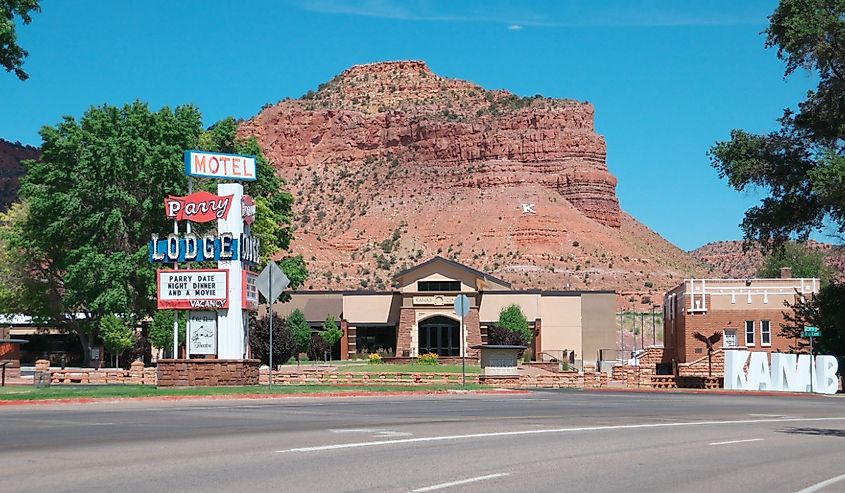
The history of Kanab as a town dates to 1864, when pioneers settled in the area and built Fort Kanab. Unfortunately, the settlement was abandoned after consistent Indian attacks. The town of Kanab was officially founded in 1870 when Mormon settlers moved to the area, and it has since blossomed into a base camp for exploring the many rock formations and monuments around. Once there, head to the Kanab Heritage Museum to learn more about the area through thousands of artifacts.
Next, check out the nearby Maynard Dixon Home and the Bingham Gallery for the finest collection of arts in the American Southwest. More stunning artworks are available back in town at Ravens Heart Gallery and Rafters Gallery in Rocking V Cafe. Afterward, step outdoors to the Moqui Cave, six miles north of Kanab, to tour a cave with dinosaur tracks and see Native American artifacts.
San Luis, Colorado

San Luis is the oldest town in Colorado, established by Hispanic settlers in 1851 after they built a church in the area and dedicated it on the day of the Feast of Saint Louis. While most of the land is used for agricultural purposes and is just home to around 600 people, it is worth a day trip as it is spiritual, historic, beautiful, and full of interesting things. One of the foremost landmarks here is the Shrine of the Stations of the Cross, housing a group of 15 sculptures depicting the crucifixion of Jesus Christ. The Mother Mary’s Garden is another attraction in town worth a visit as it is a sacred site dedicated to Mary, The Mother of Christ.
For outdoor fun with kids, the San Luis Community Park is in town, featuring covered picnic spaces, a playground, and barbecue grills.
Moab, Utah
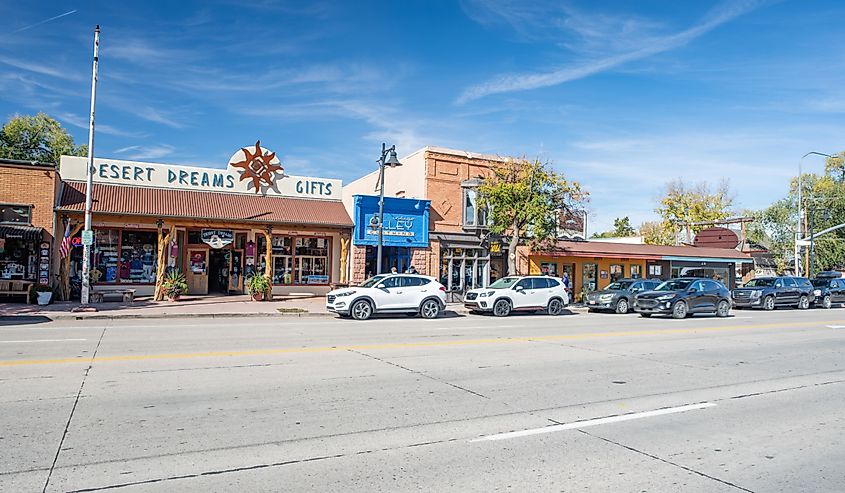
Moab is famous for its spell-binding rock scenery, but there is more to this otherwordly town to love, especially for history buffs. This town was originally founded in 1855 by the Mormon church, but after attacks from Indians, it was abandoned. In 1878, a permanent settlement was established in the area and was named Moab after the Biblical Moab. Today, Moab is full of historic attractions like Moab LDS Church (built in 1889) and Old Taylor House (built 1894). A more detailed history of the town is available at the Moab Museum, home to relics, exhibits, and archaeological finds from the area.
For a blend of history and the outdoors, visitors are invited to the Moab Giants, an open-air museum in the desert featuring giant life-sized dinosaur exhibits. Moab Giants also has the Giants Cafe, where visitors can enjoy tantalizing meals after all the adventures. Meanwhile, art lovers can always stop at the Gallery Moab for a visual treat of astounding artworks in the region.
Taos, New Mexico

Taos is an ancient town first founded in 1615 by the Spanish after their conquest of Indian Pueblo villages. However, it was officially established as a town in 1795 to serve as a fort and trade post for the neighboring Taos Pueblo. Located just three miles away, the Taos Pueblo is an ancient Native American settlement characterized by reddish-brown structures built with Adobe mud. The settlement, built between 1000 and 1450 CE, represents one of the oldest continuously inhabited communities in the United States.
It is a must-visit as it is also a UNESCO World Heritage Site. Other historic sites representing this town’s rich history include the Taos Inn (dating to the 19th century), Governor Charles Bent House (built 1830), and Our Lady of Guadalupe Church. Meanwhile, don’t forget to enjoy lunch at some of the top restaurants in the Taos Inn, such as Doc Martins, and also savor wines at the Adobe Bar. In addition to its history, Taos is also an arts town, and visitors can explore artworks by native Pueblo Americans at the Harwood, Millicent Rogers, and Taos Museums of Art.
The Colorado Plateau is an irresistible region filled with towns soaked in history. From gold rushes to Native American cultures, these towns preserve vital information from America’s earliest days worth knowing. Visit these towns in the Colorado Plateau today to immerse in the rich history of the Southwestern United States while also exploring breathtaking landscapes made up of red rock formations of various shapes and sizes.











